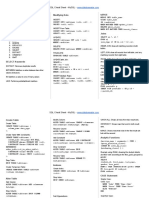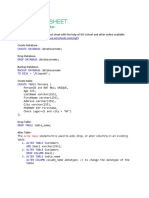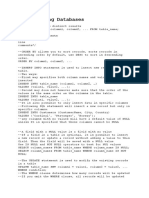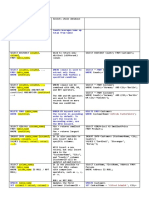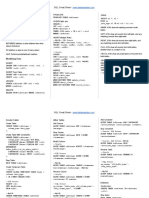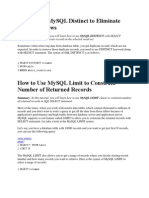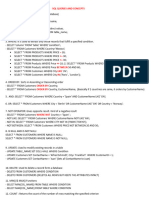0% found this document useful (0 votes)
308 views11 pagesSQL Cheat Sheet: Mosh Hamedani
This SQL cheat sheet by Mosh Hamedani summarizes key concepts from his YouTube tutorial for beginners, covering essential SQL constructs such as SELECT, WHERE, JOINs, and data manipulation. It also promotes his Complete SQL Mastery Course, offering a significant discount for early downloads. The document serves as a quick reference for SQL syntax and operations, ideal for learners and practitioners alike.
Uploaded by
linqi pengCopyright
© © All Rights Reserved
We take content rights seriously. If you suspect this is your content, claim it here.
Available Formats
Download as PDF, TXT or read online on Scribd
0% found this document useful (0 votes)
308 views11 pagesSQL Cheat Sheet: Mosh Hamedani
This SQL cheat sheet by Mosh Hamedani summarizes key concepts from his YouTube tutorial for beginners, covering essential SQL constructs such as SELECT, WHERE, JOINs, and data manipulation. It also promotes his Complete SQL Mastery Course, offering a significant discount for early downloads. The document serves as a quick reference for SQL syntax and operations, ideal for learners and practitioners alike.
Uploaded by
linqi pengCopyright
© © All Rights Reserved
We take content rights seriously. If you suspect this is your content, claim it here.
Available Formats
Download as PDF, TXT or read online on Scribd
/ 11





